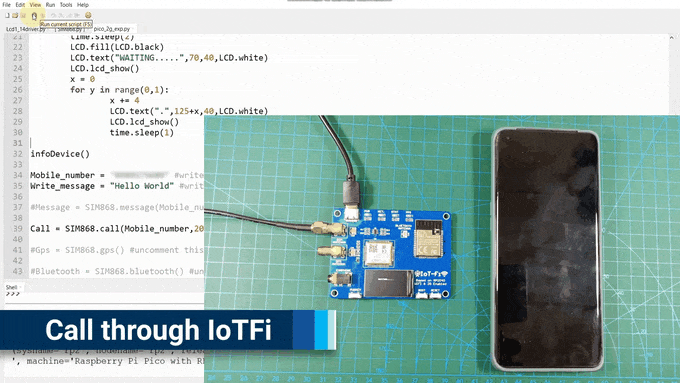These dual-microcontroller boards offer 2G or 4G cellular connection, Bluetooth, Wi-Fi, and GNSS, among other capabilities.
The IoTFi 2G and IoTFi 4G are two development boards designed for the Internet of Things (IoT) that include Raspberry Pi RP2040 and Espressif ESP32 microcontrollers as well as a choice of 2G or 4G cellular connection.
"IoTFi comes with an in-built GPS technology and Wi-Fi[-enabled] ESP32 for an excellent wireless experience," Arushi boasts of his board design, which is based on the Raspberry Pi RP2040. "A 3.5mm audio jack, a micro-SIM slot for SIM868/SIM7600G, an SD Card slot, and a [USB] Type-C connection are all included on the board."
Getting Location thought IoTFi
Sending Messages through IoTFi
Making Calls Through IoTFi
The boards employ a dual-microcontroller architecture, with user programs running on the Raspberry Pi RP2040, a dual-core Arm Cortex-M0+ with flexible programmable input/output (PIO) capabilities, and Wi-Fi connection handled by the ESP32. In the meanwhile, depending on the type of board you choose, the cellular communication is handled by a SIMCom SIM868E or SIM7600G module.
The 2G model has a limited network throughput of 85.6Kb/s up and down and includes a multi-constellation global navigation satellite system (GNSS) receiver with support for GPS, GLONASS, and BeiDou; the 4G LTE CAT1 model, on the other hand, can handle 10Mb/s down and 5Mb/s up with fallback to HSDPA, UMTS, EDGE, or GPRS as needed, and also includes GNSS
External antennas are supported on both boards, as is an onboard accelerometer, Bluetooth 2.0 connection, and USB Type-C data and power connectivity. They also have an onboard display, a full-color 1.14" LCD with a resolution of 135 x 240.
The project is presently being funded on Kickstarter, with actual incentives made by SB Components beginning at £45 for the IoTFi 2G and £105 for the IoTFi 4G (about $57 and $132, respectively).


















